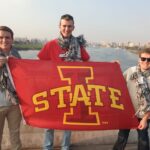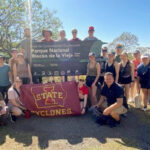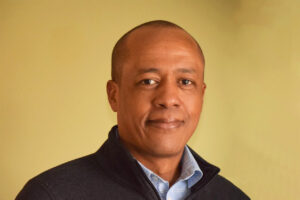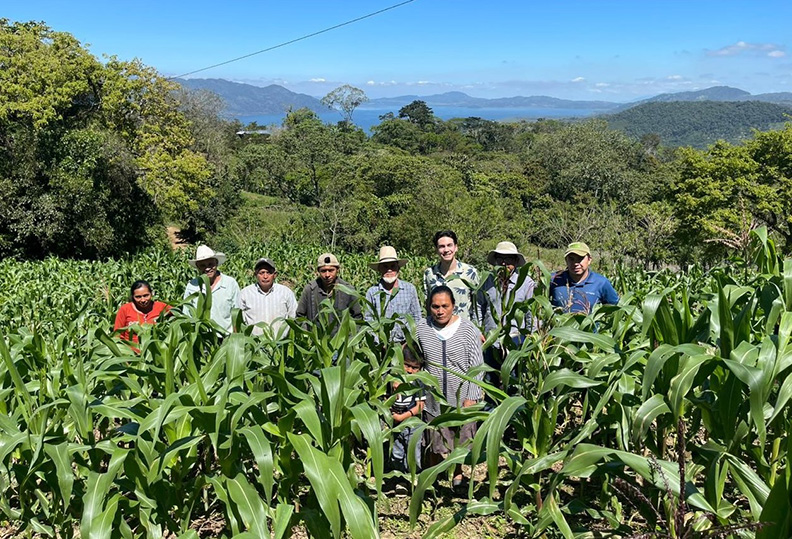
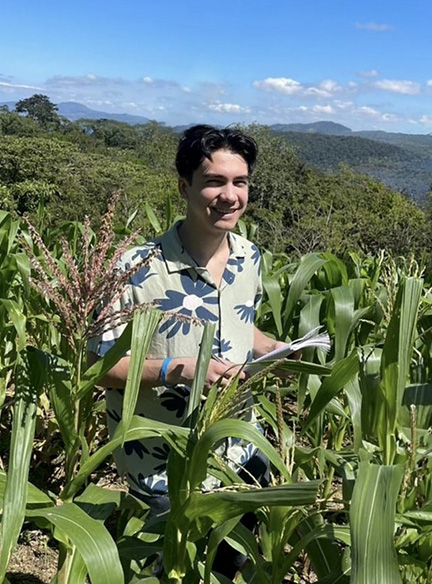
Andrew Hokanson, a senior in agronomy, recently returned from a research trip to Honduras. He received project funding through the CALS Office for Academic Innovation and the Office for Research and Discovery via the Innovation in Agriculture Young Scholar Award on the theme of feeding the growing global population without expanding the area of cultivated land.
“My ‘innovative solution’ to address this grand challenge was to enhance the diversity of tropical maize germplasm in the U.S. National Plant Germplasm System. The hope is that after characterizing the germplasm collected during my trip to Honduras these materials may be incorporated into existing maize breeding programs around the world,” said Hokanson. The collection protocol was developed to satisfy the requirements established by the International Treaty on Plant Genetic Resources for Food and Agriculture. The USDA North Central Regional Plant Introduction Station also provided in-kind support.
Hokanson’s idea came from his experience working at the North Central Regional Plant Introduction Station on the Germplasm Enhancement of Maize Project during the 2022-2023 school year. “Although I was handling germplasm collected across Latin America, I never encountered materials from Honduras. After further research, I discovered that maize germplasm from Honduras was underrepresented in the NPGS,” said Hokanson.
He worked with his research advisor, Dr. Maria Salas-Fernandez and NCRPIS Maize Curator, Dr. Vivian Bernau, who established connections with scientists in Honduras at Zamorano Pan-American Agricultural School and two local agricultural research organizations, ASOCIALAYO (Association of Local Agricultural Research Committees – Lago de Yojoa Region) and FIPAH (Foundation for Participatory Research with Honduran Farmers). Hokanson’s collection trip, which took place February 18-25, 2024, was to the region of Lago de Yojoa in the west-central part of the country.
During the collection process, Hokanson was accompanied by ASOCIALAYO Program Director Mainor Pavon and a DICTA representative (Honduras’s Directorate of Agricultural Science and Technology) German Arriaga. In total, 50 germplasm samples were collected, representing 21 uniquely named maize landraces.
“There is a lively culture of participatory agricultural research in Honduras. Some of the farmers I met with had as many as four different experiments in their fields in addition to their own production. These farmers are members of Local Agricultural Research Committees (CIALes), which are community organizations that engage farmers in participatory research, disseminate new technologies, and connect farmers with microcredit opportunities. The CIALes are intentional about including women and children in their membership,” said Hokanson.
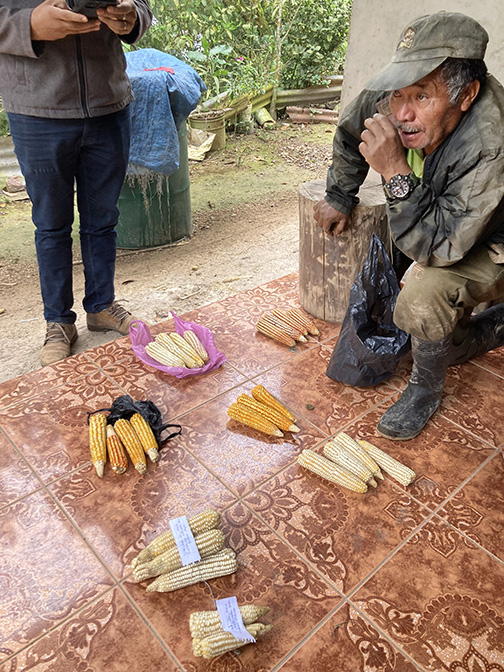
Hokanson explained that farms in this region are much smaller than those in Iowa (many under five acres). Due to the mountainous terrain, field slopes are extreme, making mechanization of agriculture in the region extremely limited. Every part of the farming process is done by hand. However, the Honduran farmers have created diverse agroecosystems. Many follow a corn-bean rotation with fruit trees scattered throughout their fields. Other crops Hokanson encountered on the trip include coffee, banana, plantain, citruses, sugarcane, avocado and mango. To combat erosion of the steep fields, some farmers have planted gandul (Pigeon pea, Cajanus cajan), which are edible and marketable.
Since most maize in Honduras is grown for human consumption, Hokanson said acceptance of GM technologies is limited to producers in less mountainous areas with larger farms. “The farmers I spoke with expressed a strong desire to continue producing the landraces that have been cultivated in their communities for generations,” said Hokanson.
Hokanson’s favorite part about visiting Honduras was learning more about the country where his mother was born and raised. “I visited once before when I was very young. After this trip, I feel more strongly connected with my Honduran ancestry. I have seen and experienced what life is like there for myself. I am thankful that this experience provided me with personal fulfillment in addition to intellectual fulfillment,” he said.
Findings from Hokanson’s trip will be presented at the R. F. Baker Plant Breeding Symposium and other conferences and research meetings. He also plans to submit abstracts to present his research at the annual meetings of the National Association of Plant Breeders and European Association for Research on Plant Breeding.
In top photo: Andrew Hokanson (third from right, back row) with a group of farmers in Honduras.
